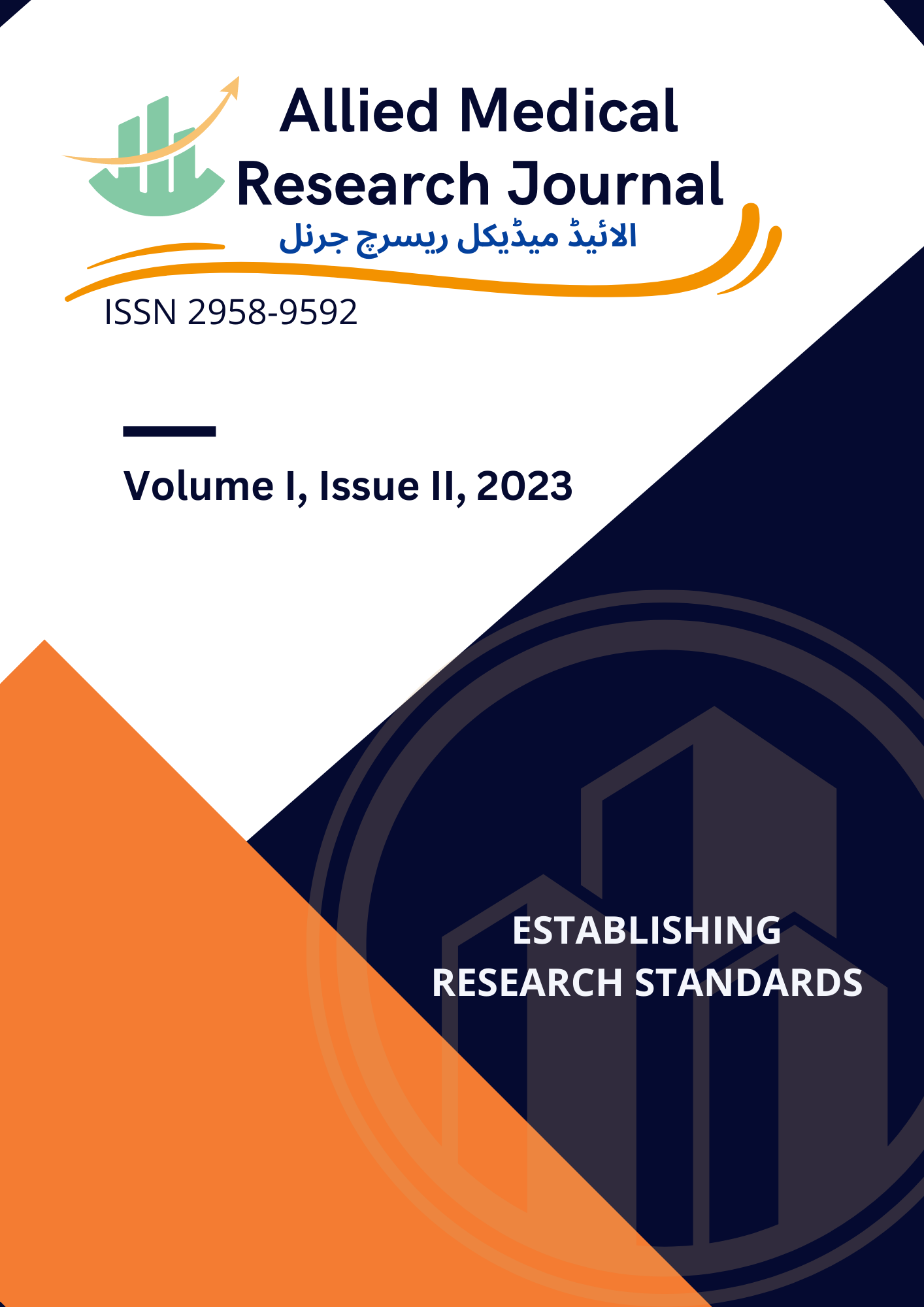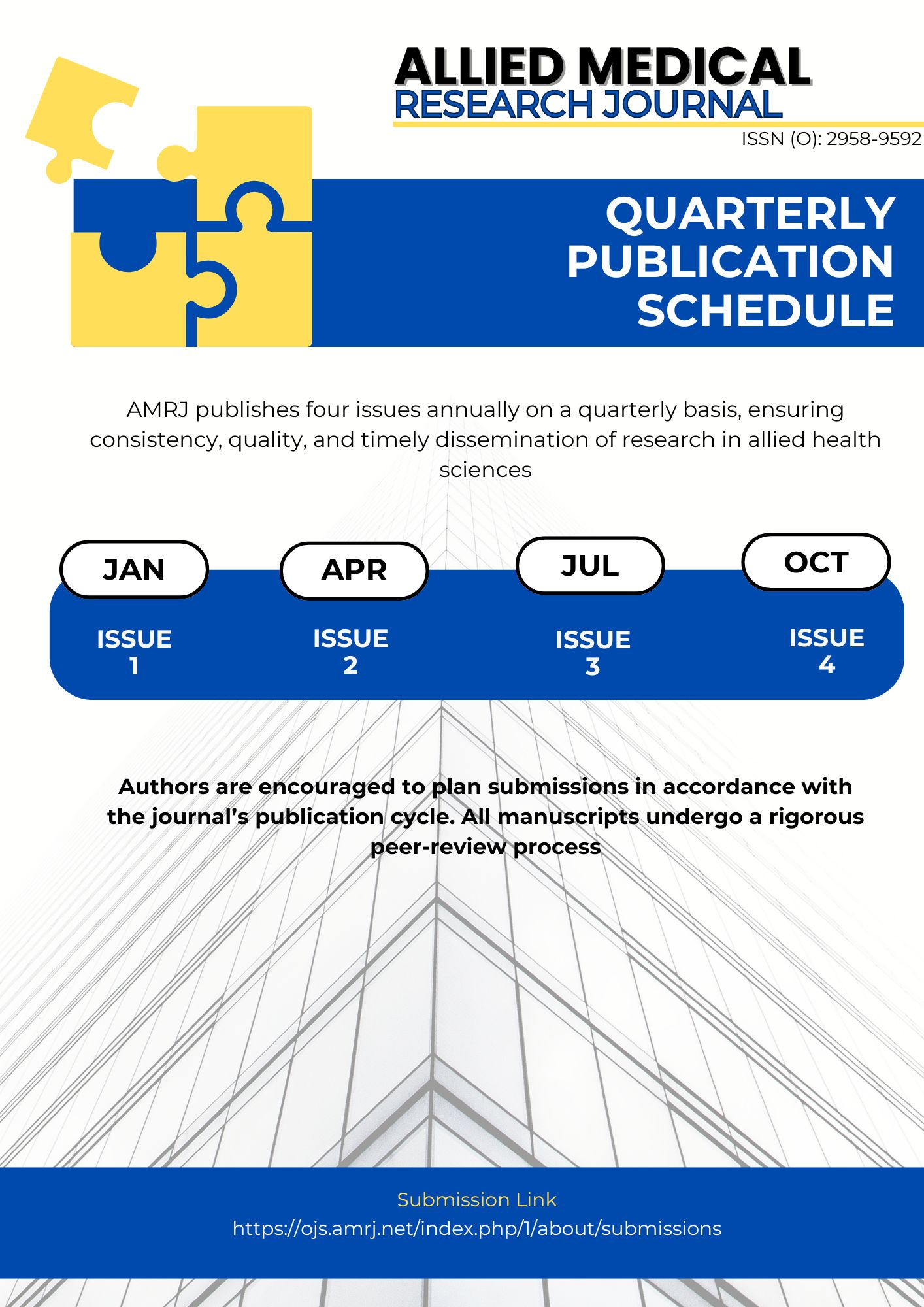Effects of Customized Biomechanical Footwear on Gait and Balance in Individuals with Polio: A Randomized Controlled Trial
Keywords:
Disability, Gait, Foot Orthosis, PoliovirusAbstract
Background
Evidence suggests that the factors behind the increased risk of falls among polio survivors are mainly categorized into intrinsic and extrinsic domains. The intrinsic category involves factors like muscle weaknesses, fear of falls and self-reported balance problem. In contrast, extrinsic factors include poor environmental circumstances and ambulatory issues that cause reduced ability to adapt to walking conditions in polio patients. Therefore, the present study aimed to investigate biomechanical footwear’s effects on gait and balance in individuals with polio.
Methods
A total of 30 participants were randomly divided into two groups of 15 each. The experimental group received customized shoe footwear with features such as medial arch support, metatarsal pad, rear foot control, fibreglass lateral counter, and a rocker sole. The control group did not receive specialized footwear.
Results
The intervention group showed significant improvements in several gait parameters compared to the control group, includingstep length (p=0.008), stride length (p=<0.001), step width (p=0.002), cadence (p<0.001) and speed (p=0.0009). The intervention group also showed significant improvements in Berg Balance Scale scores (p=0.07) compared to the control group.
Conclusion
Biomechanical footwear with medial arch support, metatarsal pad, and rear foot control can improve gait and balance in individuals with polio.
References
Khan M, Iqbal W, Murtaza SM. A prospective clinical and electrophysiological survey of acute flaccid paralysis in pediatric patients. Pakistan Armed Forces Medical Journal. 2017;67(4):668-72.
Moayedi AR, Negahi A, Yousefabad SH, Saadat SH, Salari M, Safari R, Hengami GG. Epidemiology of Acute Flaccid Paralysis in Hormozgan Province, Iran. Disease and Diagnosis. 2021;10(3):86-90.
Wells AI, Coyne CB. Enteroviruses: A gut-wrenching game of entry, detection, and evasion. Viruses. 2019;11(5):460.
Francisco Velilla R, Embarc Buh A, Abellan S, Martinez Salas E. Picornavirus translation strategies. FEBS Open Bio. 2022;12(6):1125-41.
Laha D, Sengupta P. Study of Acute Lower motor neuron weakness in adults from a rural tertiary centre of Eastern India. Journal of Advanced Medical and Dental Sciences Research. 2022;10(2):86-90.
Jayche S, Loutfi A, Sendaoui S, Talbi FZ, Lahmam M, Idrissi A, Ahami AO. A Retrospective Study on the Topographical and Etiological Aspects of Acute Flaccid Paralysis in Children in Kenitra Province, Morocco. Trop J Nat Prod Res. 2023;7(2):2352-7.
El Hage S, Safi S, Assouad E, El Kareh A, Mokled E, Salameh P. Acute flaccid paralysis incidence rate and epidemiology in children in Lebanon: a rise in numbers in the post-vaccination and refugee crisis era. African Health Sciences. 2022;22(2):116-24.
Ivanova OE, Shakaryan AK, Morozova NS, Vakulenko YA, Eremeeva TP, Kozlovskaya LI, Baykova OY, Shustova EY, Mikhailova YM, Romanenkova NI, Rozaeva NR. Cases of Acute Flaccid Paralysis Associated with Coxsackievirus A2: Findings of a 20-Year Surveillance in the Russian Federation. Microorganisms. 2022;10(1):112.
Tuijtelaars J, Roerdink M, Raijmakers B, Nollet F, Brehm MA. Polio survivors have poorer walking adaptability than healthy individuals. Gait & Posture. 2021;87:143-8.
John TJ, Dharmapalan D. Relevance of Medical Ethics in Public Health: Case Study of Polio Eradication. Qeios. 2023.
Ataullahjan A, Ahsan H, Soofi S, Habib MA, Bhutta ZA. Eradicating polio in Pakistan: a systematic review of programs and policies. Expert Review of Vaccines. 2021;20(6):661-78.
End Polio Pakistan. District-wise polio cases. End Polio Pakistan website. https://www.endpolio.com.pk/polioin-pakistan/district-wise-polio-cases.
Nolvi M, Brogårdh C, Jacobsson L, Lexell J. Sense of coherence and coping behaviours in persons with late effects of polio. Annals of Physical and Rehabilitation Medicine. 2022;65(3):101577.
Imoto D, Sawada K, Horii M, Hayashi K, Yokota M, Toda F, Saitoh E, Mikami Y, Kubo T. Factors associated with falls in Japanese polio survivors. Disability and Rehabilitation. 2020;42(13):1814-8.
Tuijtelaars J, Roerdink M, Raijmakers B, Nollet F, Brehm MA. Polio survivors have poorer walking adaptability than healthy individuals. Gait & Posture. 2021;87:143-8.
Chung E, Lee SH, Kim YH. Biomechanical Characteristics and Metabolic Efficiency of Gait in Young-old and Old-old People. Archives of Physical Medicine and Rehabilitation. 2022;103(12):e102.
Tuijtelaars J, Jeukens-Visser M, Nollet F, Brehm MA. Factors Associated With Walking Adaptability and Its Relationship With Falling in Polio Survivors. Archives of physical medicine and rehabilitation. 2022;103(10):1983-91.
Gusi N, Madruga M, González-González MD, Pérez-Gómez J, Prieto-Prieto J. Health-related quality of life and multidimensional fitness profile in polio survivors. Disability and Rehabilitation. 2022;44(8):1374-9.
Brogårdh C, Lexell J, Hammarlund CS. The influence of walking limitations on daily life: a mixed-methods study of 14 persons with late effects of polio. International Journal of Environmental Research and Public Health. 2022;19(13):8157.
Brogårdh C, Espelund C, Lexell J. The benefit of a flexible ankle-foot orthosis on balance and walking ability in persons with late effects of polio: a mixed-methods study. JPO: Journal of Prosthetics and Orthotics. 2019;31(2):95-103.
Lovegreen W, Kwasniewski M, Panchang P, Smith MJ. Orthotic management of polio and Postpolio syndrome. In Atlas of Orthoses and Assistive Devices 2019:277-88. Elsevier.

Downloads
Published
Issue
Section
License
Copyright (c) 2023 Asima Irshad, Hafiz Muhammad Manan Haider khan, Danish Latif, Mahnoor Bugti, Rehan Ramzan Khan, Muhammad Khan Bugti

This work is licensed under a Creative Commons Attribution-NonCommercial 4.0 International License.








